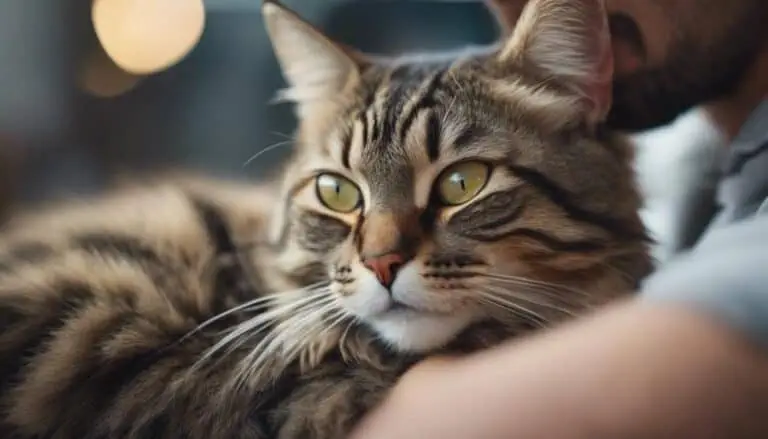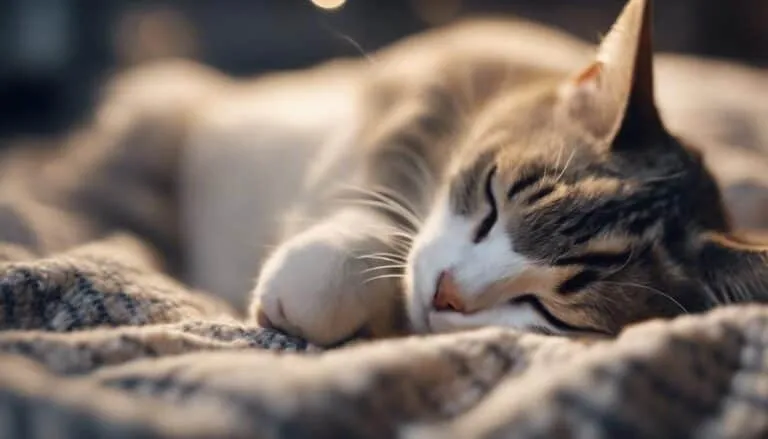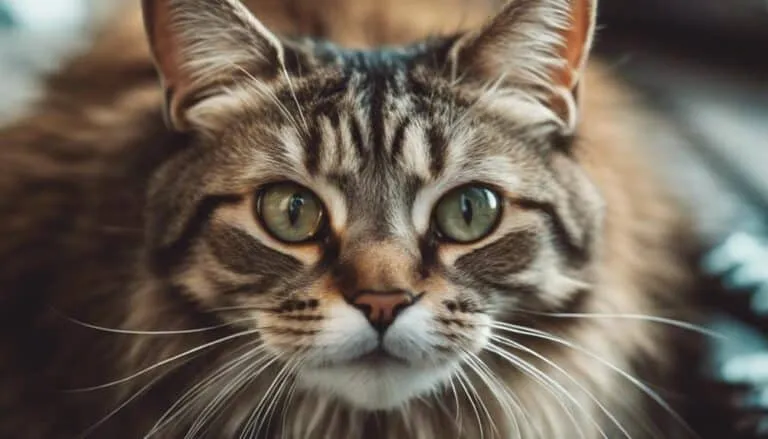The Best Fluffy Pancakes recipe you will fall in love with. Full of tips and tricks to help you make the best pancakes.

Feline Aortic Thromboembolism, often referred to as FATE, is a devastating condition that poses a significant threat to our feline companions. This silent killer silently lurks within their bodies, striking with sudden and lethal force. Its impact on cats is profound, causing excruciating pain, immobility, and a range of distressing symptoms.
While the underlying causes of FATE can vary, understanding its nature and consequences is crucial for cat owners and veterinarians alike. In this discussion, we will explore the insidious nature of Feline Aortic Thromboembolism, delve into its signs and causes, and shed light on the immediate veterinary care and treatment options available.
Join us as we unravel the mysteries surrounding this silent killer and learn how we can protect our feline friends from its devastating grip.
Key Takeaways
- Aortic Thromboembolism (FATE) in cats is a highly fatal disease caused by a blood clot becoming stuck at the aortic trifurcation.
- Cats suffering from FATE show severe and dramatic signs, including excruciating pain, paralysis in one or both hind legs, and cold legs with pale or dusky paw pads.
- The most common cause of FATE is cardiac or heart disease, but other underlying conditions like cancer, hyperthyroidism, kidney disease, or hypertension can also increase the risk of blood clots.
- Cats with FATE require immediate veterinary care, including strong pain medications, sedatives, and potentially cardiac medications. Euthanasia is often considered due to the severity of the disease and tissue damage.
Understanding Feline Aortic Thromboembolism
Feline Aortic Thromboembolism (FATE) is a devastating condition characterized by the formation of a blood clot that obstructs the blood flow to the hind limbs of cats. This condition requires immediate veterinary care to alleviate pain and minimize further complications.
Once diagnosed, management strategies focus on providing aggressive pain management and addressing the underlying cause of the blood clot, such as heart disease or other medical conditions.
Long-term care for cats with FATE involves ongoing monitoring, medication administration, and regular veterinary check-ups to ensure the cat's overall health and well-being.
While the severity of FATE often leads to euthanasia due to tissue damage and poor prognosis, for cats that do survive, it is important to address the underlying cause to prevent future clot formation and to provide the best quality of life possible.
Signs and Symptoms of FATE in Cats
The signs and symptoms of Feline Aortic Thromboembolism (FATE) in cats are severe and unmistakable indicators of this devastating condition. Cats suffering from FATE may not show any signs of illness before the blood clot occurs. Once affected, they experience excruciating pain, howling, and may exhibit aggressive behavior towards their owners.
The most obvious symptom is the inability to move or feel one or both of their back legs. The affected legs are cold to the touch, with pale pink or dusky paw pads and a lack of pulses.
Diagnosis methods for FATE in cats include recognizing these clinical signs, as well as additional tests like ultrasound with Doppler or CT scans for a definitive diagnosis.
Management strategies involve immediate veterinary care, administration of strong pain medications, sedatives, and potentially cardiac medications.
Common Causes of Aortic Blood Clots in Cats
What are the common causes of aortic blood clots in cats?
Aortic thromboembolism (FATE) in cats is most commonly caused by cardiac or heart disease. Structural abnormalities in the heart can disrupt the normal blood flow, leading to the formation of blood clots.
Other underlying diseases such as cancer, hyperthyroidism, kidney disease, or hypertension can also increase the risk of blood clots in the aorta.
In some cases, aortic blood clots may occur without any known underlying illness, which is referred to as idiopathic.
To diagnose aortic thromboembolism, veterinarians rely on the typical signs of lack of pulses, hind leg paralysis, and pain. Additional diagnostic tests, such as ultrasound with Doppler or CT scans, may be necessary for a definitive diagnosis.
Immediate Veterinary Care for Feline Aortic Thromboembolism
Immediate veterinary care is crucial for cats with feline aortic thromboembolism (FATE) in order to alleviate pain and potentially save their lives. When seeking immediate veterinary care for a cat with FATE, there are several important considerations to keep in mind:
- Transportation Precautions: Cats with FATE should be wrapped in a towel or blanket to keep them secure and minimize movement during transportation. This helps prevent further injury and discomfort.
- Urgency: FATE is a life-threatening condition, so it is essential to prioritize getting the cat to the veterinarian as quickly as possible. Time is of the essence in providing the necessary treatment.
- Pain Management: Cats with FATE experience excruciating pain, and immediate veterinary care involves administering strong pain medications to provide relief and improve their comfort.
- Sedation: Sedatives may be necessary to help calm and relax the cat during transportation and examination, as they can be highly stressed and anxious due to their condition.
- Identification of Underlying Conditions: While immediate care focuses on managing the immediate symptoms, it is also crucial to identify any underlying conditions that may have contributed to the development of FATE. This helps guide long-term treatment options and prevent future occurrences.
Treatment Options for Cats With FATE
When addressing the treatment options for cats with feline aortic thromboembolism (FATE), it is crucial to consider the various approaches aimed at managing the underlying condition and providing relief for the affected feline.
Managing pain is a primary concern in the immediate treatment of FATE. Strong pain medications are necessary to alleviate the excruciating pain experienced by the cat. Sedatives may also be administered to help keep the cat calm during this distressing time.
Additionally, cardiac medications may be prescribed to address the underlying heart disease that often leads to the formation of blood clots.
Long-term care for cats with FATE involves addressing the underlying conditions that increase the risk of blood clots, such as heart disease, cancer, hyperthyroidism, kidney disease, or hypertension. Regular veterinary check-ups and monitoring are essential to ensure the cat's well-being and to prevent future episodes of FATE.
Prognosis and Recovery for Cats With Aortic Thromboembolism
The prognosis for cats with aortic thromboembolism is generally poor, with many cats being euthanized due to the severity of the condition and the resulting tissue damage. However, for the small percentage of cats that do survive, long-term management is necessary to ensure their well-being.
Here are some important points to consider for the prognosis and recovery of cats with aortic thromboembolism:
- Cats that survive may have ongoing complications and require ongoing medical care.
- Long-term management involves addressing the underlying cause of the blood clot, such as heart disease or other predisposing factors.
- Supportive care, including pain management, proper nutrition, and physical therapy, may be necessary to improve the cat's quality of life.
- Regular veterinary check-ups and monitoring are essential to detect any potential recurrence or complications.
- Owners should be provided with emotional support and education regarding the cat's condition and the necessary steps for long-term management.
Preventing Aortic Thromboembolism in Cats
For cat owners looking to prevent aortic thromboembolism, proactive measures can be taken to address the underlying causes and reduce the risk of this severe and potentially fatal condition. Preventing blood clots is crucial, and managing underlying conditions can play a significant role in achieving this.
Regular veterinary check-ups are essential to monitor the cat's overall health and detect any underlying diseases that may increase the risk of blood clots. Cats with heart disease should receive proper medical management to optimize heart function and reduce the likelihood of clot formation. Controlling other conditions like hyperthyroidism, kidney disease, and hypertension through appropriate treatments can also help prevent the development of blood clots.
Additionally, providing a balanced diet, regular exercise, and maintaining a healthy weight can contribute to overall cardiovascular health and reduce the risk of aortic thromboembolism in cats.
Conclusion
In conclusion, Feline Aortic Thromboembolism is a deadly condition that requires immediate veterinary care. With its silent and devastating nature, it is essential for cat owners to be aware of the signs and symptoms in order to seek prompt intervention.
By understanding the common causes and treatment options available, we can better prevent and manage this silent killer. Remember, early detection and specialized care are crucial for the prognosis and recovery of cats affected by this condition.








